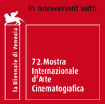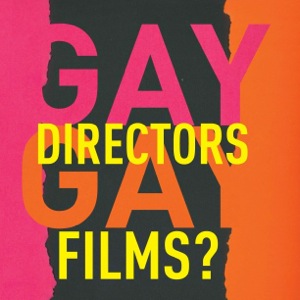|
2015: 12th edition
september 2 - 12 |
|
27/08/2015
Panel in Venice Film Fest, Sep 8, 2015, 2-3pm - Sala Tropicana Istituto Luce Cinecittà, Hotel Excelsior.
With Emanuel Levy
PHOTOGALLERY HIGH RES


Gay Directors, Gay Films? A book by Emanuel Levy
Panel in Venice Film Fest, Sep 8, 2015, 2-3pm - Sala Tropicana Istituto Luce Cinecittà, Hotel Excelsior.
With Emanuel Levy
The notion that a distinctly gay gaze and gay sensibility are reflected in the work of openly gay directors has not been thoroughly explored in the fields of cinema studies. Gay Directors, Gay Films? deals with one central issue: the effects of sexual orientation on the career, film output, and sensibility of five homosexual directors: Pedro Almodóvar, Terence Davies, Todd Haynes, Gus Van Sant, and John Waters. The book aims to show that these directors have perceived their sexual identities as outsiders in complex and varied ways, that the impact of sexual orientation may differ from one director to another and from one phase to another within the career of the same director.
I will discuss the book's comparative perspective, which guided me in placing these directors, their films and their careers in the socio-political and cultural settings in which they have lived and worked. The five directors share two things in common, sexual orientation (they are all openly gay) and biological age, all five directors were born after World War II and thus belong to the same age cohort. The books examines the impact of national identity and indigenous culture on the oeuvre of these directors, three of whom are American (Waters, Van Sant, and Haynes) and two European (Spaniard Almodóvar and Britsher Davies). Surprisingly, most books have centered on a particular genre, or individual directors, but there are not many books that compare and contrast five different directors. The book aims to offer a look at filmmakers who have been inventive pioneers in tackling controversial issues and taboos.
The book raises a series of interesting, not easily answerable questions. Is there a distinctly gay mode of looking--gay gaze as it were--at social reality, at sexual politics? Do gay directors make specifically gay-themed films targeted at mostly gay audiences? How do we define a film as gay? By its explicit contents (text) and/or by its implicit meanings (subtext)? These are some of the intriguing questions, which are theoretically-infused and have pragmatic implications, that have guided me and are still at the center of film, feminist, and queer studies.
PHOTOGALLERY HIGH RES
© Associazione Culturale Giornate degli Autori - Via Santa Croce in
Gerusalemme 107 (RM) - P.IVA 08079171008 - Licenza S.I.A.E. 4858/I/4524
TRASPARENZA - Informativa sull'utilizzo dei cookie - Informativa sulla privacy
Design: EU-GENIA srl - Webmaster: Daniele Sorrentino
TRASPARENZA - Informativa sull'utilizzo dei cookie - Informativa sulla privacy
Design: EU-GENIA srl - Webmaster: Daniele Sorrentino








